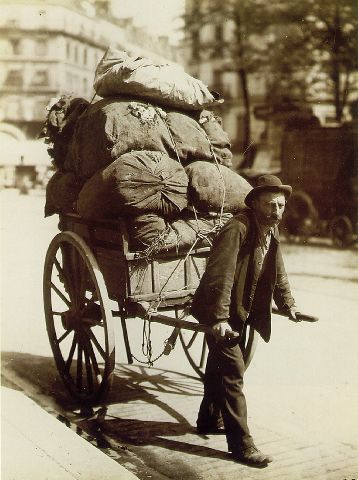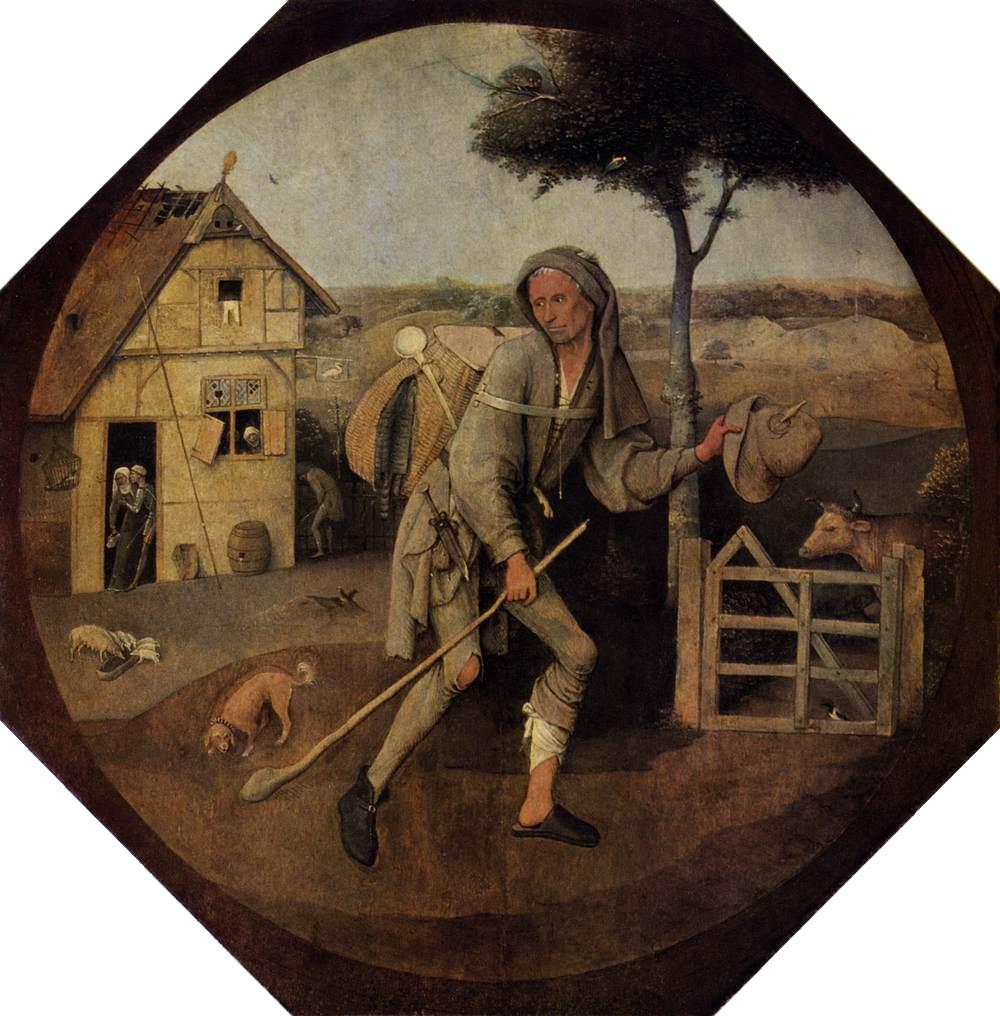Last night on the radio was a Roubini Global Economics staff member, Megan Green commenting on her Greek trip. Initially, the temptation when one hears the word “Roubini” is to change stations, but she tackled the subject surpisingly well, especially her viability analysis on what austerity really means and how it is a cheap recourse that avoids the difficult heavy lifting of structural reform in Greece. Structural reform being essentially trade barriers to protect a small coterie of wealthy Greeks from facing competition and discouraging foreign investment which could liberate or at least alleviate the serfdom to these new Greek gods of the ruling class.

Atget. ---The new sites brought all urban classes into contact with each other and, in so doing, gave rise to new identities that were embodied in a series of publicly visible and representable figures: the flâneur, the sandwichman, the street-corner-boy, the ragpicker, the dandy, the prostitute . These new figures, specularised and 'botanised' on the asphalt of the big city represented new, uniquely metropolitan subjectivities. These figures of modernity expressed changed relationships between individual time and public time in the increasing speed of urban traffic, as well as the changing relationships between individual labour and public displays of commodities in big cities.--- Read More:http://www.borderlands.net.au/vol1no2_2002/lloyd_departing.html
Megan Green then went on to describe the dire situation of the elderly and poor on which austerity will fall hardest, predicting a class war/antagonism that will escalate from petty crime to perhaps outright violence against the haves and oligarchs. Although Greece is small, and Wall Street as Mark Blyth points out, is sucking the patient dry,the implications of Green’s comments bring us back to that lowest member of society in traditional industrial Europe: the ragpicker and it reminded myself of Danny Kaye in the Madwoman of Chaillot.

---The most compelling scene of the film—and also the most stagey—is the trial. Josephine (a shrill creation of Dame Edith) rules that the criminals can be tried in absentia as long as they are provided with proper counsel. The Ragpicker is chosen to defend them. This may be Danny Kaye’s finest hour on film. He presents arguments about the legitimacy of progress and the rights of innovators over those who would squander their resources, and wins Constance over. This alarming development encourages him, and he reveals more of his clients’ naked purposes. Revealing the true hubris of the oligarchs, The Ragpicker sums up his defense with, “We buy the legislators who make the law. We ARE the law!” Kaye’s performance taps the potential cruelty and arrogance in us all, infusing The Ragpicker with the integrity a defense attorney should have for his clients, but also their guilt.---Read More:http://www.ferdyonfilms.com/?cat=25&paged=2
The ragpicker was seen by Walter Benjamin as that individual capable of finding the poetic and playful moment, the perceiver of the space where one could catch a glimpse of the utopian moment. Although Benjamin framed the study in hoary Marxism, the idea of recomposing bourgeois, elite, and even working class imagery within these scraps and leftovers, imbuing them with new meaning is something Greeks could be thinking about. Others have tied this figure, and here Chaplin’s Tramp comes into play, as a metaphor for the Wandering Jew punished for some imaginary sin. But more profoundly, Hieronyus Bosch saw the figure of the Wanders, or the Wayfarer,- he also referred to it as the prodigal son- as an individual on a spiritual quest unencumbered by material ambitions of a universal figure not culturally or nationally easily identified; a kind of boundary crosser.
ADDENDUM:

---The story of the ragpicker became intimately tied with the folkloric legend of the Wandering Jew.---Image:http://www.flickr.com/photos/hytam/5106776373/sizes/m/in/photostream/
With his jerky walk, the ragpicker expresses at the same time the infernal temporality of fetishism and the vigorously emerging temporality of anthropological materialism, cracking the homogeneous temporality of phantasmagoria. He goes through the reification and the modern myths that cover phantasmagoria up to differentials he catches a glimpse of at any moment. Under the auspices of phantasmagoria, he perceives reified bodies, and under reified bodies, he perceives a real historical experience. Under phantasmagoria’s horizontal temporality, he perceived fetishism’s cyclical temporality, and under the latter, he reveals the vertical temporality, constantly interrupted, of anthropological materialism….

---The problem with Bosch is that multiple interpretations can be made of the figure of the Wanderer. And certainly it has been appropriated and semitized, villainized in anti-semitic caricatures, but whether this was Bosch’s intention is an educated guess based on symbolic association that does not necessarily have a Jewish or ethnic context.---
…The ragpicker’s dislocated walk answers thus to jerks of the real life, and that is why he forms a sociology at each dislodged moment. Sociology, here is no longer the sociology of rationality, or of the interests of the actors, as in Weber, or the sociology of crystallized institutions, as in Durkheim, but, rather, the sociology of the conflict between these interests and these institutions. It is a sociology at the contact point between action and reification, a contact point by which, in a dialectical and unorthodox conception, society lives and transforms itself, a contact point crossed by collective imaginary, dreams and myths.Read More:http://anthropologicalmaterialism.hypotheses.org/707








 COMMENTS
COMMENTS



